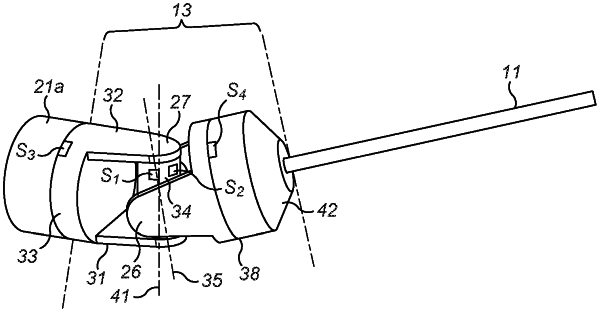| CPC A61B 34/76 (2016.02) [A61B 34/30 (2016.02); A61B 34/35 (2016.02); B25J 9/1689 (2013.01); B25J 13/085 (2013.01); B25J 17/0275 (2013.01); A61B 2034/305 (2016.02); A61B 2090/066 (2016.02)] | 18 Claims |

|
1. A surgical robotic component comprising an articulated terminal portion, the terminal portion comprising:
a distal segment having an attachment for an instrument to be connected thereto, wherein the attachment is fixed relative to the distal segment such that it maintains a fixed relative orientation between the distal segment and the instrument;
an intermediate segment;
a basal segment;
a first articulation between the distal segment and the intermediate segment, the first articulation permitting relative rotation of the distal segment and the intermediate segment about a first axis; and
a second articulation between the intermediate segment and the basal segment, the second articulation permitting relative rotation of the intermediate segment and the basal segment about a second axis,
wherein:
the intermediate segment comprises a third articulation permitting relative rotation of the distal segment and the basal segment about third and fourth axes; and
the first, second and third articulations are arranged such that in at least one configuration of the third articulation:
the first and second axes are collinear;
the third and fourth axes are transverse to the first axis;
the third and fourth axes are transverse to each other;
the third and fourth axes intersect each other; and
the surgical robotic component is configured to determine torque about the third and fourth axes.
|